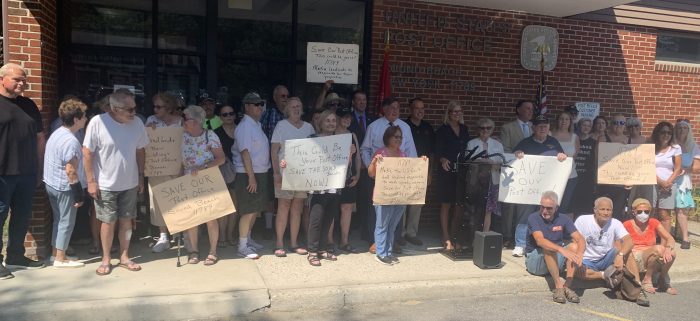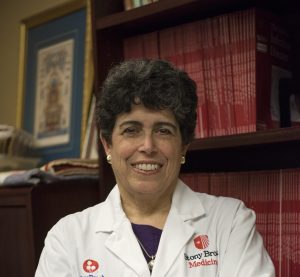Sound Beach residents and officials blast protracted post office closure

By Sabrina Artusa
Sound Beach’s residents and political representatives are fed up over the prolonged closure of the hamlet’s post office on New York Avenue, which has been closed for repairs since May.
New York State Sen. Anthony Palumbo (R-New Suffolk), Town of Brookhaven Supervisor Ed Romaine (R) and Councilwoman Jane Bonner (R-Rocky Point), among others, rallied outside the post office Wednesday, Sept. 6, putting pressure on the U.S. Postal Service and the property owner to expedite reopening of the complex.
Some 15 weeks ago, the Brooklyn-based property owner of the building posted a sign on the door informing of its immediate but temporary closure. Sound Beach residents, blindsided by the abruptness, were forced to wait over a week to receive mail from nearby offices.
The private property owner has largely been unreceptive to attempts to reach out, according to Chad Lennon, a representative of U.S. Congressman Nick LaLota (R-NY1).
“We’ve been communicating,” Lennon said. “We haven’t seen reciprocation.”
USPS replied once, informing LaLota that they expected the landowner to make repairs and reopen the post office by Sept. 8. Despite this, the property owner hasn’t filed any permits for work on the building to date. Needless to say the office was not opened on Sept. 8.
The town is prepared to conduct an analysis of the building, along with repairs, when permitted. There are “building engineers on staff to come in this building and know right away what it needs to be up to code,” Palumbo said. “This is absolutely unacceptable.”
Palumbo suggested the landowner is “slow walking” the process while continuing to get rent from the federal government.
“You should not have to pay for services you don’t get,” Romaine said. “Just as the federal government shouldn’t pay taxes for a building that’s closed.”
Palumbo, meanwhile, considered the town “the most important entity” in prompting action and incurring change.
“The owners of this property need to be held accountable and held responsible to do the right thing,” Bonner said. “Bring this post office back to the residents and the community of Sound Beach.”
Some residents had time-sensitive packages, such as medication, that they were not receiving. One woman said that the contents had melted by the time she did received her package.
“We walked by one day, and it was closed,” said Patty Blasberg, who has lived in Sound Beach for 33 years. “That should be public knowledge,” adding that the post office closure “is detrimental to our community.”
Many in attendance, including Bonner, said that in a small hamlet like Sound Beach, the post office is vital to the “community’s identity.”
Blasberg said she always enjoyed the social aspect of going to the post office, where she could see her neighbors. “We want the community to thrive,” she said. “You can’t do that without a post office.”
According to Shirley Smith, another Sound Beach resident, the post office has needed repairs for a while and mentioned a leaking ceiling.

































